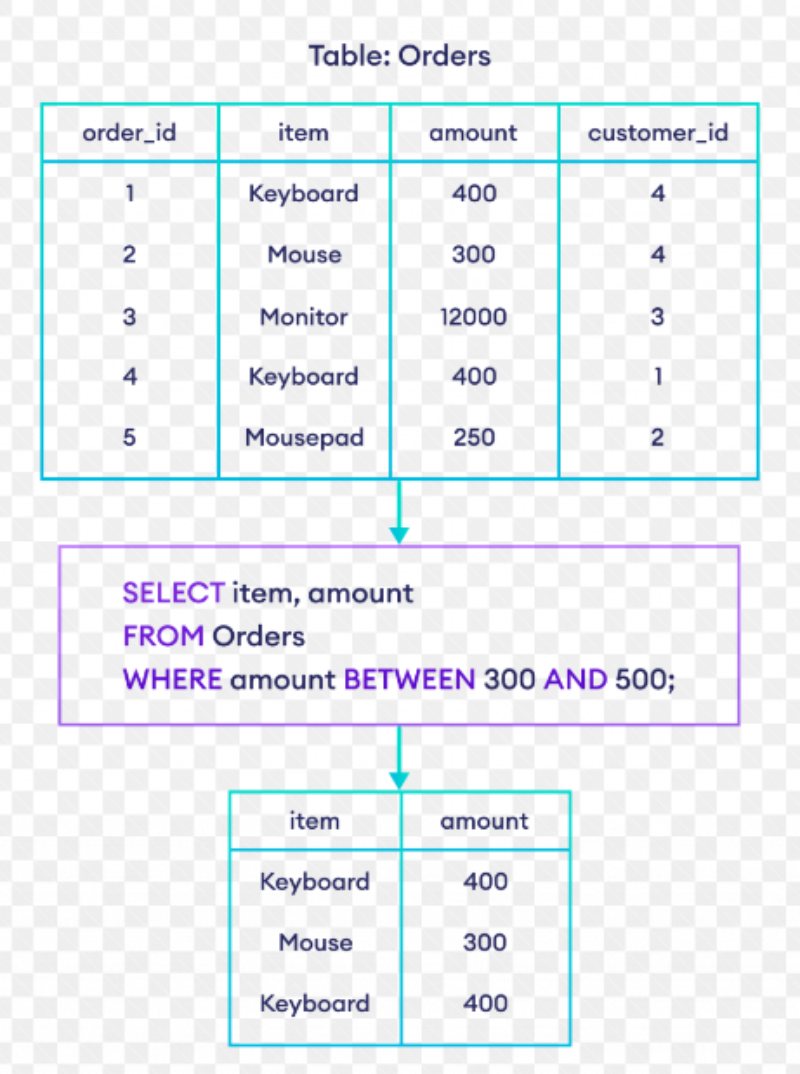
The SQL BETWEEN operator is a powerful tool for filtering data based on specific ranges of
values. Whether you're a beginner or an experienced database administrator, this guide will
provide you with a comprehensive overview of the SQL BETWEEN operator, its syntax, and
practical examples of how it can be used.
The SQL BETWEEN Operator is used to retrieve values within a specified range. The range can
be defined as numeric, text, or date data types. This operator can be used in conjunction
with the WHERE clause to filter data based on a specified range. Additionally, the SQL
BETWEEN Operator is inclusive, meaning it will include values that are equal to the
specified endpoints of the range. It is important to note that this operator is not case
sensitive for text data types, but it is case sensitive for numeric and date data types.

What is the SQL BETWEEN Operator?
The SQL BETWEEN operator is a logical operator used to filter data based on specific ranges of values. It is commonly used in SQL queries to retrieve data that falls within a specified range. The syntax for the BETWEEN operator is as follows:
sql code
SELECT column_name(s)
FROM table_name
WHERE column_name BETWEEN value1 AND value2;
In this syntax, column_name refers to the name of the column you wish to filter on, table_name refers to the name of the table you wish to query, value1 is the lower range value, and value2 is the upper range value.
Examples of Using the SQL BETWEEN Operator
Let's look at some practical examples of how the SQL BETWEEN operator can be used.
Example 1: Filtering Numeric Data
Suppose you have a table called sales that contains information on sales made by your company. The table has the following columns:
- sale_id: The unique ID of the sale.
- sale_date: The date the sale was made.
- sale_amount: The total amount of the sale.
To retrieve all sales made between January 1, 2022, and June 30, 2022, you would use the following SQL query:
sql code
SELECT *
FROM sales
WHERE sale_date BETWEEN '2022-01-01' AND '2022-06-30';
This query will retrieve all rows from the sales table where the sale_date falls between January 1, 2022, and June 30, 2022.
Example 2: Filtering Text Data
Suppose you have a table called employees that contains information on your company's employees. The table has the following columns:
- employee_id: The unique ID of the employee
- first_name: The employee's first name
- ast_name: The employee's last name
- hire_date: The date the employee was hired
To retrieve all employees whose last name falls between 'A' and 'M', you would use the following SQL query:
sql code
SELECT *
FROM employees
WHERE last_name BETWEEN 'A' AND 'M';
This query will retrieve all rows from the employees table where the last_name falls between 'A' and 'M'.
Best Practices for Using the SQL BETWEEN Operator
When using the SQL BETWEEN operator, it is important to keep the following best practices in mind:
1. Ensure that the range values are of the same data type as the column being filtered on.
For example, if the column is a date column, the range values should be dates.
2. Be careful when using the NOT BETWEEN operator. This operator can return unexpected
results if the range values are not in the expected order.
3. Avoid using the SQL BETWEEN operator on columns that contain NULL values. The result of
such queries may not be what you expect.
Conclusion
The SQL BETWEEN operator is a powerful tool for filtering data based on specific ranges of
values. Whether you're working with numeric or text data, the SQL BETWEEN operator can help
you retrieve the data you need quickly and efficiently. By following the best practices
outlined in this guide, you can ensure that your SQL queries are accurate, efficient, and
reliable. In conclusion, the SQL BETWEEN Operator is a powerful tool for filtering data
based on specific ranges of values. Whether you're working with numeric, text, or date data,
the SQL BETWEEN Operator can help you retrieve the data you need quickly and efficiently. By
following the best practices outlined in this guide, you can ensure that your SQL queries
are accurate, efficient, and reliable.
At PLOVER, we
take pride in offering a diverse range of remote work options, and we understand that
finding the right job can be a challenging task. That's why all the jobs listed on our
platform are verified by us to ensure that they meet our strict criteria. We make sure that
each job is remote, pays in USD, and meets our working conditions, so you can focus on
finding the best fit for you.
final thought


by Harsh Verma
final thought

